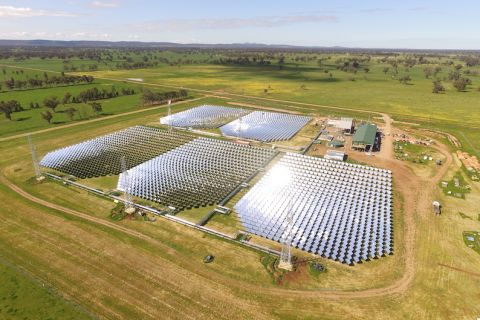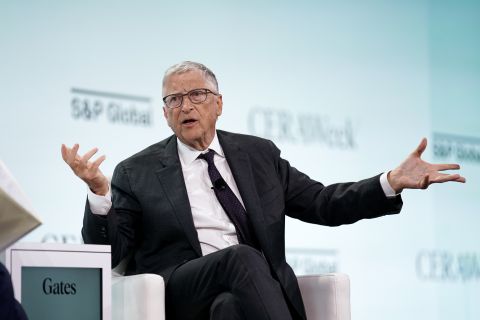The Canadian acquisitions and divestitures market is by no means closed. The big and numerous deals of 1999-2001 have dried up but acquisitions by royalty trusts and smaller companies continue, albeit at higher prices than last year. "We've had good deal flow," says Ross Kobayashi, principal, Kobayashi & Associates Ltd., a Calgary-based M&A advisory firm. He is currently handling a C$100-million-plus ConocoPhillips asset divestment. "The active buying group here is the junior oil and gas company, and then the royalty trusts." Public equity dollars are funding the royalty trusts by investors seeking a higher rate of return than cash markets will pay but without as much risk as investing in traditional E&P companies. The royalty trusts throw off money in much the same way the master limited partnership (MLP) pipeline structure works in the U.S. The trusts don't invest in high-risk drilling programs. They buy long-life, producing assets, collect the cash and distribute it to their unit-holders. "Given the availability of trust funding, we expect to see efforts by trusts to continue to buy assets from larger companies. The alternative is for E&P companies to convert themselves into trusts or, to maximize shareholder value, sell long-life assets to trusts and retain the land and undeveloped properties," Kobayashi says. The royalty trusts can expand outside Canada, and certainly could be buyers in the U.S. "Their mandate is long-life, stable production. Eventually this will take them to basins in the U.S.," he says. One trust is reportedly also looking at assets in the North Sea, believing those may be more attractive-in purchase price and daily production-than the long-life opportunities remaining in western Canada. Sylvia Barnes, who is focused on upstream mergers, acquisitions and divestitures for investment-banking firm Petrie Parkman & Co. in Houston, says the Canadian E&P business remains a competitive, but distinctly different market. "The current consolidation trend in the U.S. is actually only starting to catch up with the dramatic reduction in the number of E&P companies Canada experienced during the last three years." Barnes, who is a native of Canada and was formerly an investment banker based in Houston for Nesbitt Burns, sees Canadian oil and gas markets as more dynamic than in the U.S. "The cycle time is shorter in Canada for small-cap companies to emerge post-consolidation of large independents, in part because Toronto Stock Exchange investors are more receptive to higher risk/return profiles in the natural resource sector than U.S. stock exchange investors." Mark Ammerman, managing director and Houston-based head of the U.S. energy practice for investment-banking firm Scotia Capital, Toronto, foresees the possibility of a Canadian acquisition of a U.S. independent. "With so many mergers in recent years, the large Canadian independent producers are too big now to be bought by the average U.S. independent. They're more the size of a major oil's bite. On the other hand, they're big, generally lowered levered than their U.S. peers, and could easily take under a large independent," he says. Record prices The average price paid for Canadian reserves rose to a record C$8.43 per barrel of oil equivalent (BOE) on a 6:1 basis in 2002, according to a tally by Calgary-based investment-banking firm Sayer Securities Ltd., due to higher commodity prices and fewer assets available for purchase than in 2001, when the average price paid was C$7.80. A good deal of the improved price was seen in the second half of 2002, the firm adds: the average price paid during the first half was C$7.60 per BOE; in the second half, C$8.87. A similar improvement was seen in the U.S., reports Houston-based negotiated-sale advisory firm Randall & Dewey Inc.: U.S. assets fetched US$6.90 per BOE in the fourth quarter, compared with US$4.62 in the third quarter. And prices continue to improve: three intra-U.S. deals in the first quarter of 2003 paid up to US$9 per BOE for proved developed reserves. In deal value, 2002 total Canadian activity fell off remarkably, though, says Frank Sayer, principal, Sayer Securities, to a total value of C$25 billion from C$46 billion in 2001. More than 70% of the total was in just two deals: the merger of PanCanadian and Alberta Energy, which resulted in the formation of EnCana Corp.; and the merger of Canadian Natural and Rio Alto. "Part of the decrease was due to a lack of assets and companies of a reasonable size and quality available for purchase," Sayer says. "As an illustration, in 2001 there were nine deals of more than C$1 billion in size completed for a total value of C$34.3 billion, whereas in 2002 only two occurred, for C$18.2 billion." According to Randall & Dewey's count, there were 133 announcements for Canadian companies and assets in 2002, totaling US$9.4 billion at an average US$5.27 per BOE of proved reserves. The first-nine-month average had been US$5.16 per BOE, but the whole-year figure was helped by a fourth-quarter average price of US$7.12 per BOE, the firm reports. And, U.S. companies retreated from the acquisition scene: U.S. acquisitions in Canada totaled C$200 million worth in 2002, compared with C$33 billion in 2001, Sayer adds. U.S.-company sales of Canadian assets in 2002 totaled more than their purchases. Anadarko Petroleum, Devon Energy Corp. and Calpine Corp. made large Canadian-asset sales last year after rationalizing their new portfolios. The forecast Kobayashi expects, for the rest of the year, "if commodity prices remain strong, we'll see a fair amount of deal flow." Juniors will continue to merge and buy, and larger companies will continue to spin out assets that don't fit their portfolio any longer. "There is bound to be more spin-off opportunities to come from the U.S. independents operating in Canada." Barnes agrees that income trusts are a distinctive point of differentiation in the Canadian transaction market. "Canadian income trusts have, for years, picked off lower-risk longer-life reserves. But now we are seeing income trusts take billion-dollar bites-much like the magnitude of large MLP transactions in the U.S. that have funded interstate pipelines, midstream assets and storage facilities." Ammerman notes that Canadian trusts can bid more for assets and still give investors a high rate of return, when considering tax advantages. "They've changed everything." Meanwhile, producers enjoy cash flow from high oil and gas prices. "Unlike previous years, several of our recent sell-side assignments have seen the asset go to a Canadian buyer," Ammerman says. "Liquidity in the Canadian market is still pretty good relative to the U.S. The ability to pull off a large deal quickly is still possible, however we see few people in much of a hurry nowadays." Capital access has been strong for Canadian producers, Kobayashi says. Start-ups by former executives of larger Canadian independents that have been sold in the past few years are receiving both private and public equity capital. Ammerman adds, "There are very few smaller companies left to buy. Also a lot of Canada-U.S. mergers have not gone as smoothly as some buyers might have expected. It's hard to impress an American culture on Calgary. Not that one or the other is right. They're just different." Barnes expects northbound U.S.-Canada transactions will resume, as the Canadian market rebuilds a field of intermediate-size companies. Ammerman expects deal activity to improve as the war clouds pass and investors realize North America might be entering a period of constrained gas supplies. Also, producers are pressed to invest their increased cash, high-risk drilling isn't rewarded by the equity markets, and buying back debt and equity isn't sexy. "In the next six months, I expect companies will say 'Let's go buy somebody.'"
Recommended Reading
High Interest Rates a Headwind for the Energy Transition
2024-04-18 - Persistent high interest rates will make transitioning to a net zero global economy much harder and more costly, according to Wood Mackenzie Head of Economics Peter Martin.
Could Concentrated Solar Power Be an Energy Storage Gamechanger?
2024-03-27 - Vast Energy CEO Craig Wood shares insight on concentrated solar power and its role in energy storage and green fuels.
EnCap Launches Bildmore to Invest in Hard-to-finance Clean Energy
2024-03-11 - In an effort to support hard-to-finance clean energy projects, EnCap Energy Transition Fund is launching Bildmore, a platform expected to invest in up to 15 third-party battery storage, solar and other energy transition projects per year.
Bill Gates: ‘A Heroic Effort’ is Beginning, but Climate Goals Still Won’t be Hit
2024-03-26 - Bill Gates said during CERAWeek by S&P Global that the energy transition was picking up speed but still wouldn’t be able to achieve the climate goals established under the Paris Agreement of 2015.
Energy Transition in Motion (Week of Feb. 9, 2024)
2024-02-09 - Here is a look at some of this week’s renewable energy news, including the latest on a direct lithium extraction technology test involving one of the world’s biggest lithium producers and the company behind the technology.





